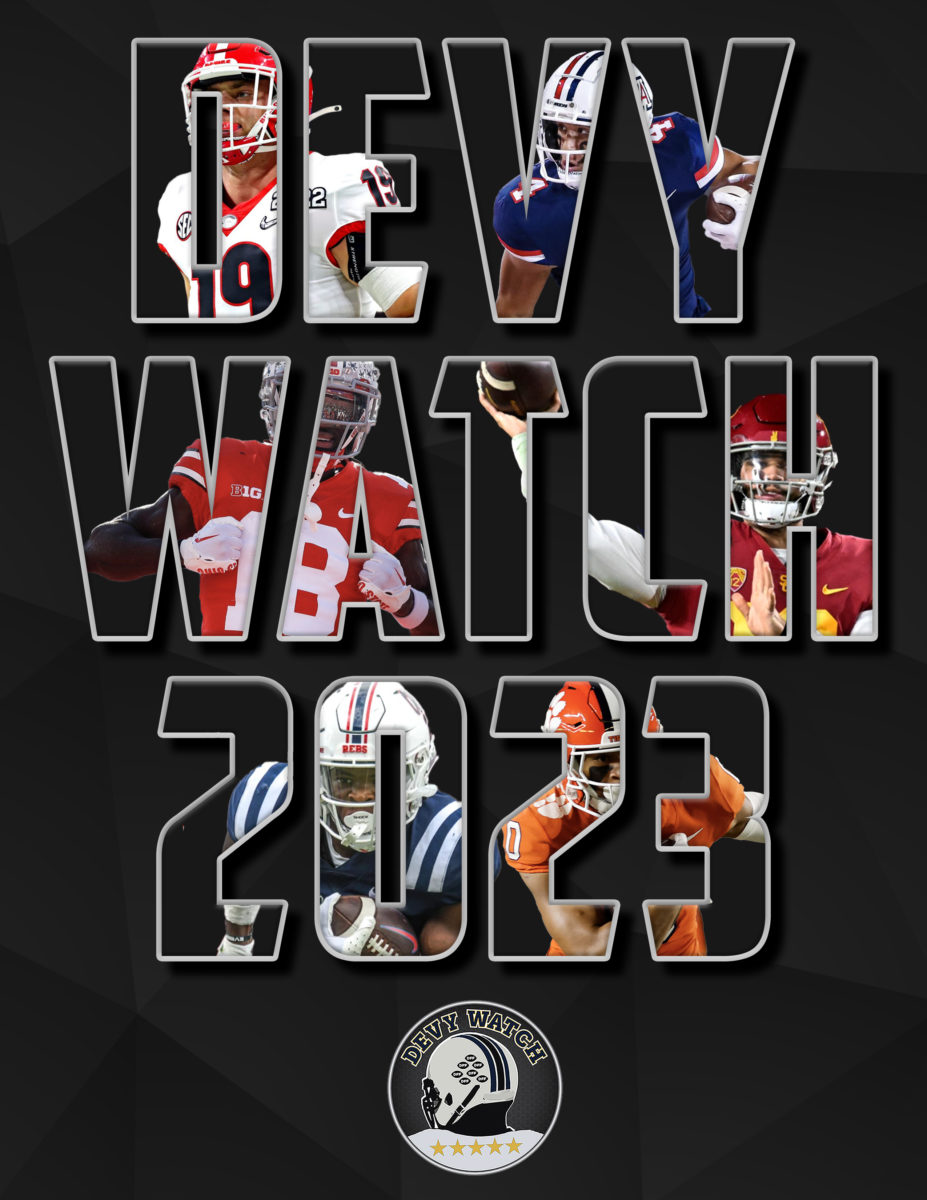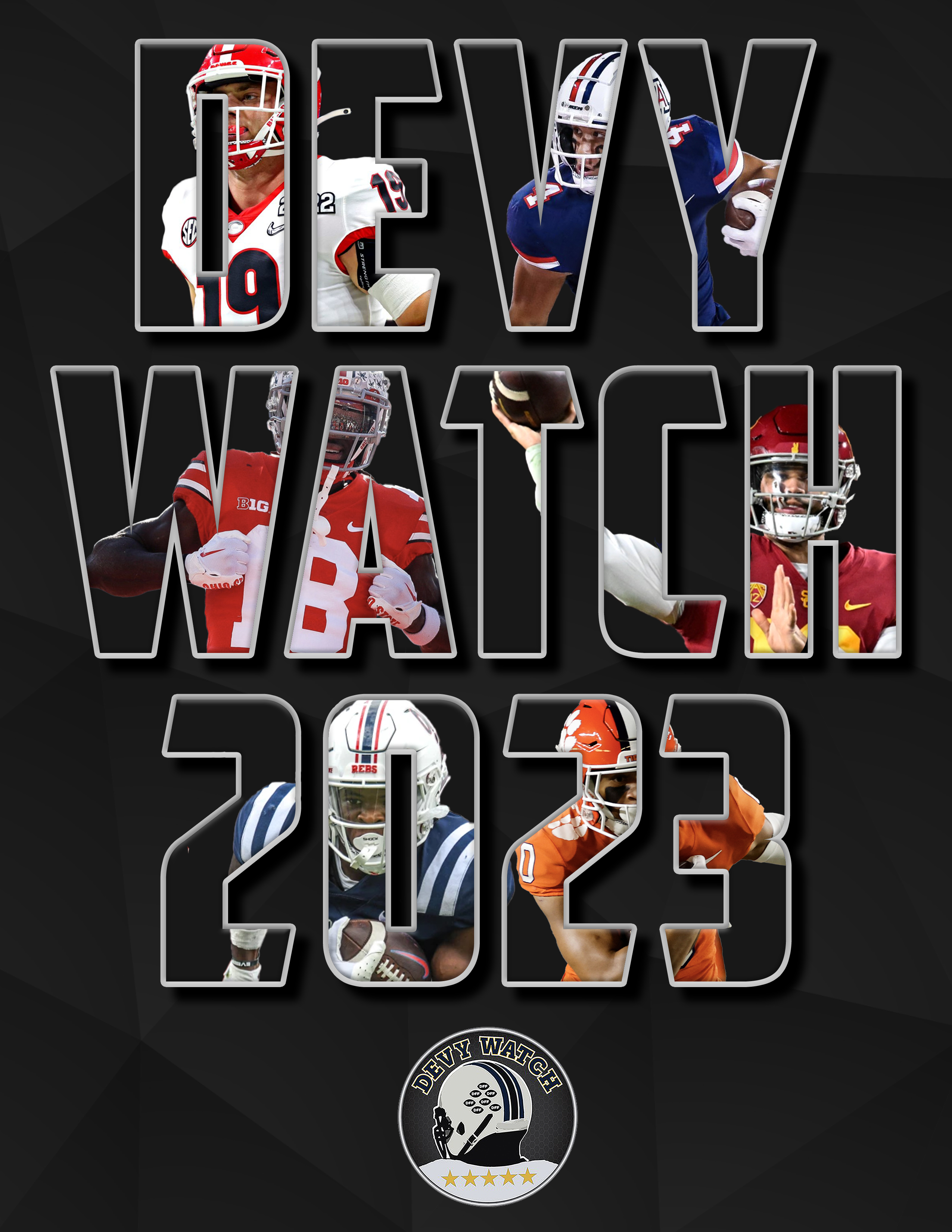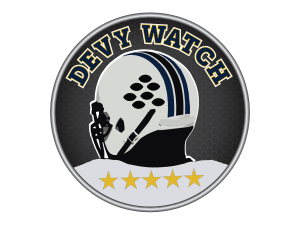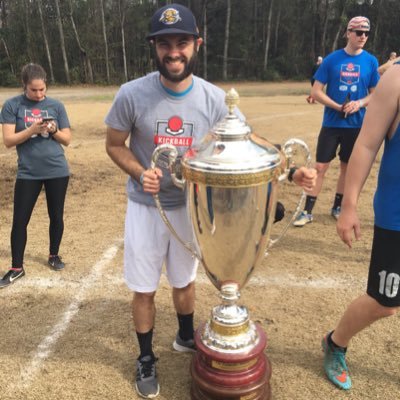Welcome to “I Got 5 On It”, each week I’ll be picking five news-worthy subjects based around college football to cover. Ranging from views on Devy prospects, general college football talk, interesting stats, and a little bit of hip-hop music mixed in now and then.
1. C2C
Campus 2 Canton leagues are the new craze in Dynasty and the Devy world. But beware of where you get your information. The vast majority of the content I see generated towards C2C is one-sided. They tell you what deep Devy players to roster, but they don’t even bother to acknowledge the College Fantasy side of the equation. I mean, the point is to try and win both sides of the league, isn’t it? What’s the point in paying to play in the CFF side of the league if you’re not playing to win? You are just wasting money at that point. People are out here snatching up Trey Sanders in C2C leagues, why? At best, he’s the third back at Alabama in 2021, and that gives him zero fantasy upside and his NFL upside is murky at this point. Don’t waste that pick on Sanders, draft Buffalo RB Kevin Marks. Marks is going to kill it fantasy-wise in 2021 and has some pro upside, not much though. Over the last two seasons, Buffalo’s previous RB1, Jaret Patterson, averaged almost 30 fantasy points per game. Over that same stretch as Patterson’s backup, Marks averaged nearly 15 points per game. Going into 2021, Marks projects as one of the top fantasy options at the back position. Marks’ college fantasy production outweighs any slight pro upside that Sanders has at this point. His 25-30 fantasy points per game this fall will aid you in your attempt to help win the CFF side of the league. What’s more valuable, potentially winning some money from the college side of the league or Trey Sanders scoring you 5 points per game as a pro? Give me the chance at winning money.
If you really want to maximize your dollar and potential earnings, attacking the CFF side is the way to go. Many people ignore this side of the league and just want to stack the NFL upside. That in itself eliminates about 3-5 teams from truly competing for the CFF title right off the bat. Another 3-5 eliminate themselves by not truly knowing who are the good college fantasy producers. That Michigan WR1 isn’t producing like the Hawaii, Nevada, or SMU WR1, but the UM WR has the name cache so he gets drafted higher.
Avoid the fringe NFL guys and just stack CFF producers to dramatically improve your chances at cashing in. What does a fringe NFL talent scoring 5 points per game in the NFL do for your fantasy squad, nothing. Rostering a guy like George Pickens isn’t going to greatly impact your CFF team, but he has a high NFL upside. But don’t roster the guys with no CFF upside and fringe NFL talent. What’s the point? When you can roster a CFF producer that will at least give you a great value on one side of the league. Back to my previous example Kevin Marks over Trey Sanders. Marks will greatly impact your CFF squad while Sanders will have very little impact on either side of the league. His only upside is being a former sexy Devy name and a former high-ranked recruit.
There are many deficiencies on the CFF side that can be taken advantage of to win some money. This is why we all do this. Winning some money on the CFF side (if leagues don’t pay out equally) is better than no money.
To truly capitalize on these deficiencies you should be listening to guys who play CFF for a living. While they might not know the guys with the most NFL upside they’ll greatly aid you in your chance at winning the CFF league. Follow guys like Kyle Francis, Mike Bainbridge (Mike’s Patreon page might be the single best CFF source on the market right now), and Nate Marchese for starters. Money is money no matter if it comes from the College or NFL side.
2. C2C Adds
As I previously stated, Kevin Marks at Buffalo is a must-add. If healthy he’s a shoo-in for a top 5 fantasy back. Pushing near 30 PPG, Marks will be the ace in the hole for any team gunning for the CFF title.
Bailey Zappe, QB, WKU: The ‘Toppers poached nearly the entire House Baptist team. They snatched HBUs offensive coordinator, starting QB, and their top receivers. In four games at HBU in 2020, Zappe averaged 53.8 passing attempts per game. While Zappe doesn’t have an NFL arm, he’s got more than enough arm to shredded CUSA defenses. WKUs new pass-heavy approach will be premium CFF real estate. WKU added his top two receivers from HBU in Jerreth and Josh Sterns who combined for 60/857/9 in four games from 2020.
Brennan Armstrong, QB, Virginia: Armstrong is nowhere near an NFL talent, but is an excellent college fantasy option. From his eight healthy games in 2020, Armstrong averaged over 10 points a game just with his legs. Despite his lack of refinement as a passer, he still added nearly 15 PPG passing in 2020. Armstrong has the potential to start for another two years and adds great CFF value.
Chase Brown, RB, Illinois: Brown is a good player with some NFL upside, but his true value lies on the CFF side. Bret Bielema’s RB1 will always be a premier fantasy option. I liked what I saw on tape in 2020 from Brown I think the arrow is pointing up with his game.
Kimani Vidal, RB, Troy: As a true freshman, Vidal averaged just a hair under 15 PPG. Adding Vidal to your C2C squad will give you three more years of RB2 or better production on your CFF team. 26 receptions as a tFR with a great BMI, Vidal has some NFL upside as well.
Jaylon Robinson, WR, UCF: Change in HC and offensive scheme gives slight hesitance, but 55/979/6 in 2020 was a great year in just 10 games for Robinson. UCF is losing 71/1039/10 from the departure of Marlon Williams. Robinson is a former OU Sooner, his NFL future is capped by his Marquise Brown size and frame.
Justin Hall, WR, Ball State: Hall averaged 24 PPG in 2020 during Ball State’s seven-game schedule. Hall has tallied over 2,700 yards of receiving and 600 rushing yards over his four years at Ball State. Taking advantage of the extra COVID year, Hall looks to be a major fantasy force. Hall’s QB, Drew Plitt isn’t a bad addition either.
Other Notable Adds: QB: Juice Williams, Illinois…Jake Haener, Fresno State…Tanner Mordecai, SMU…KJ Jefferson, Arkansas…RB: Tim Baldwin Jr., Indiana…Zander Horvath, Purdue…Ty Chandler, North Carolina…De’Montre Tuggle, Ohio…WR: Calvin Austin, Memphis…Daniel Jackson, Minnesota…Corey Rucker, Arkansas State… TE: Cole Turner, Nevada…Sean Dykes, Memphis…Brenton Strange/Theo Johnson, Penn State
3. C2C Freshman to Target
Behren Morton, QB, Texas Tech: 247’s sixth-rated Pro-Style QB, Morton capped his HS career off with 3,600 Yards and 37 TDs to 6 INTs. Morton adds some rushing upside, he added 127-897-19 as a rusher. Morton will have the chance to be a three to four-year starter in a high-powered fantasy offense. Sign me up.
Jaxson Dart, QB, USC: One of the nation’s top risers as a senior in 2020 went from having offers from Utah State and BYU to signing with USC. Dart had a magical 2020 throwing for 4,700 Yards and 67 TDs to 4 INTs and added 128-1195-12 as a rusher. Top-notch talent with a great fantasy scheme. USC’s Air Raid offense lends to great fantasy appeal.
Other QBs: Sawyer Robertson Mississippi State…Luke Altmyer Ole Miss…Donaven McCulley Indiana…Clay Millen Nevada
Kamarro Edmonds, RB, North Carolina: Talked in-depth about Edmonds last week. Top talent mixed with great opportunity. UNC vacates a ton of rushing production from 2020. Edmonds has the potential to be a fantasy force for two to three years.
Ke’Travion Hargrove, RB, Mississippi State: Hargrove was a one-time Lousiana Tech commit before blowing up with P5 offers. Hargrove provides great pass-catching ability out of the backfield. While MSU won’t be running the ball a lot they love passing the ball to their backs. Max Borghi averaged 70/486/4 as a pass-catcher his two years under Mike Leach.
Other RBs: Deshun Murrell, UCLA…Devin Neal, Kansas…Jaylen Anderson, WVU…JP Martin, Memphis…Alton McCaskill, Houston…Audric Estime, Notre Dame…Josh Hough, Syracuse
Christian Lewis, WR, Kentucky: This pick is heavily dependent on the expected offensive change in Lexington. Lewis has a lot of talent and could be an early impact player in a more friendly fantasy scheme than in previous years.
Theodore Knox, WR, Mississippi State: One of the fastest players in this class. Knox has a 4.42 40-yard and a 10.4 100-meter to his name. Speed teamed with a pass-happy coach could lead to some monster fantasy days.
Other WRs: Lonnie White Jr., Penn State…Shadrach Banks, Texas A&M…Ketron Jackson, Arkansas…Keon Coleman, Michigan State…Roc Taylor, Memphis…Caleb Johnson, North Texas…Roderick Daniels, SMU…Titus Mokiao-Atimalala, UCF…Keagan Johnson, Iowa
TEs: Leo Blackburn, Georgia Tech…Tyler Moore, Iowa State…Aaron Steinfeldt, Indiana…Erik Olson, Colorado
4. Freshman RB Impact
A few weeks back, I talked about the lack of production from last year’s top 10 incoming freshman receivers. Overall, the top 10 incoming freshman RBs (according to 247Sports ranks) faired much better than the wide receiver position. When I talked about the freshman impact a few weeks back, I was wanting everyone to have more realistic expectations when it comes to tFR playing time. That shiny new toy that you just drafted and doesn’t play just loses you value right off the bat. Last year, Julian Fleming was the WR1 for 90-95% of the Devy community. A 7-catch freshman season barely has Fleming inside most Devy analysts’ top 5 2023 WRs now. Guess what, Fleming isn’t playing much more in 2021 (outside of injuries) so he’s only going to lose you more value over the next 10 months. Same with Emeka Egbuka and any other freshman WR incoming to OSU that won’t be catching over 10 balls in 2021. A large portion of the Devy community has Egbuka as the current WR1 for the 2024 class. He’s going to be in the same boat as Fleming this time next year and sliding down boards due to lack of production.
Early playing time is much easier to earn for freshmen backs. The transition from HS to college is a lot easier for backs than say receivers, quarterbacks, or linemen. Only four of the top ten backs had less than 400 scrimmage yards. MarShawn Lloyd didn’t play a snap due to an ACL injury, but was in line was a large role. DeMarkcus Bowman transferred after a handful of games at Clemson. Kendall Milton missed time due to a knee injury and Jase McClellan was stuck behind a lot of other veteran talent on the Crimson Tide offense.
This year’s top incoming freshman aren’t in a much different situation. Out of 247s top ten incoming freshman, two are going to Ohio State and won’t see much playing time. LSU signed three of the top ten players and has a logjam with young talent as well. Maybe one of the three sees major playing time but still will be limited with KayShon Boutte and Koy Moore already on campus. The Crimson Tide signed two of the top ten as well, and have a lot of underrated receiver talent that will make it hard to make an early impact as well. Players like Javon Baker and Thaiu Jones-Bell are young and talented and have more experience in college. Troy Franklin at Oregon has the best chance of making an early impact among the top ten receivers. Franklin has talent and Oregon doesn’t exactly have a loaded receiver core. Lonnie White, Jr. at Penn State also has a decent chance of early playing time, but PSU does have a few receivers blocking his path. With Jahan Dotson and Parker Washington already established, this PSU passing game can’t support three receivers breaking out.
Looking at the top ten freshman running backs you already see some instant impact potential. TreVeyon Henderson at Ohio State should be starting by mid-season for the Bucks. Henderson is tiers ahead of the other backs in this class. Not even close in my opinion. Will Shipley and Donovan Edwards should be in the mix to have big roles as well. Both have some veteran backs in front of them but nothing that they can’t overcome and carve out a role for 2021. A bit further down the top ten, you find Trevion Cooley going to Louisville and Kamarro Edmonds going to UNC. Both are coming into places with key production losses to the NFL. Guys like Camar Wheaton, LJ Johnson, Armoni Goodwin, Evan Pryor, and Lovasea Carroll are going into crowded backfields and will have very limited production in 2021. All five situations have the potential to clear up following the 2021 season with a lot of potential departures to the NFL in those select backfields. A player just outside of the top ten in Devin Neal enrolled at Kansas. With the loss of Pooka Williams, early production is almost expected, he’s a potential riser due to his expected early production.
Setting realistic expectations in your mind is the key. If you expect Egbuka to come out with 700 yards in 2021, you will be surely disappointed with his 2021 season. Drafting Egbuka at WR1 this year is going to be a value loser. This time next year he’ll be lucky to be ranked as a top 5 receiver in the 2024 with his lack of production. Just like his teammate Julian Fleming is facing this year. Even with the expected losses of Chris Olave and Garrett Wilson, Egbuka still has to beat out guys like Jameson Williams, Fleming, JSN, Gee Scott, Jr., and the other talent his own recruiting class to get on the field. Drafting a prospect as highly as you’ll have to draft Egbuka this offseason, is extremely risky when they have no clear-cut path to production for at least two years.
5. Freshman Spotlight
Moving forward until next fall, when we have some game action again, I’ll be highlighting an incoming freshman each week in the 5 spot. This week, I put LSU receiver signee Deion Smith under the spotlight.
The Mississippi native signs with LSU as the eighth-rated receiver in the nation and a top 70 overall prospect. My rough 2024 ranks have Smith as my second-rated receiver in the class. Smith received some high praise from coach Orgeron. “He reminds me a lot of Justin Jefferson,” Orgeron said on Wednesday.” Smith had a monster junior year in 2019. He caught 43/1,059/19 touchdowns while averaging 31.2 yards per punt return and 37.9 yards per kick return. His senior season saw Smith transfer high schools to play ball due to COVID. He managed to haul in 36/640/7.
Smith enrolled early at LSU and is listed at 6’3” and 205lbs. His 247 page listed him at 172lbs so that’s quite the transformation or a bit fabricated by LSU. Smith has a 4.61 40-yard dash from 2019 on his resume, but he looks to play faster than that. He’s probably more of a mid 4.5s type of runner. Smith shows great burst and acceleration. He moves with such ease on the field, just gliding around. Smith should excel in college at getting yards after the catch and as a vertical threat. Doesn’t appear to have the best hands right now, uses his body a lot to catch balls.
LSU has brought in a ton of receiver talent the last two cycles. Getting on the field early will say a lot about Smith’s talent.
LSU signee Deion Smith should be getting more hype. Kid can ball. #Devy pic.twitter.com/nIRHqeRlKS
— Greg Brandt (@devywarehouse) February 17, 2021










